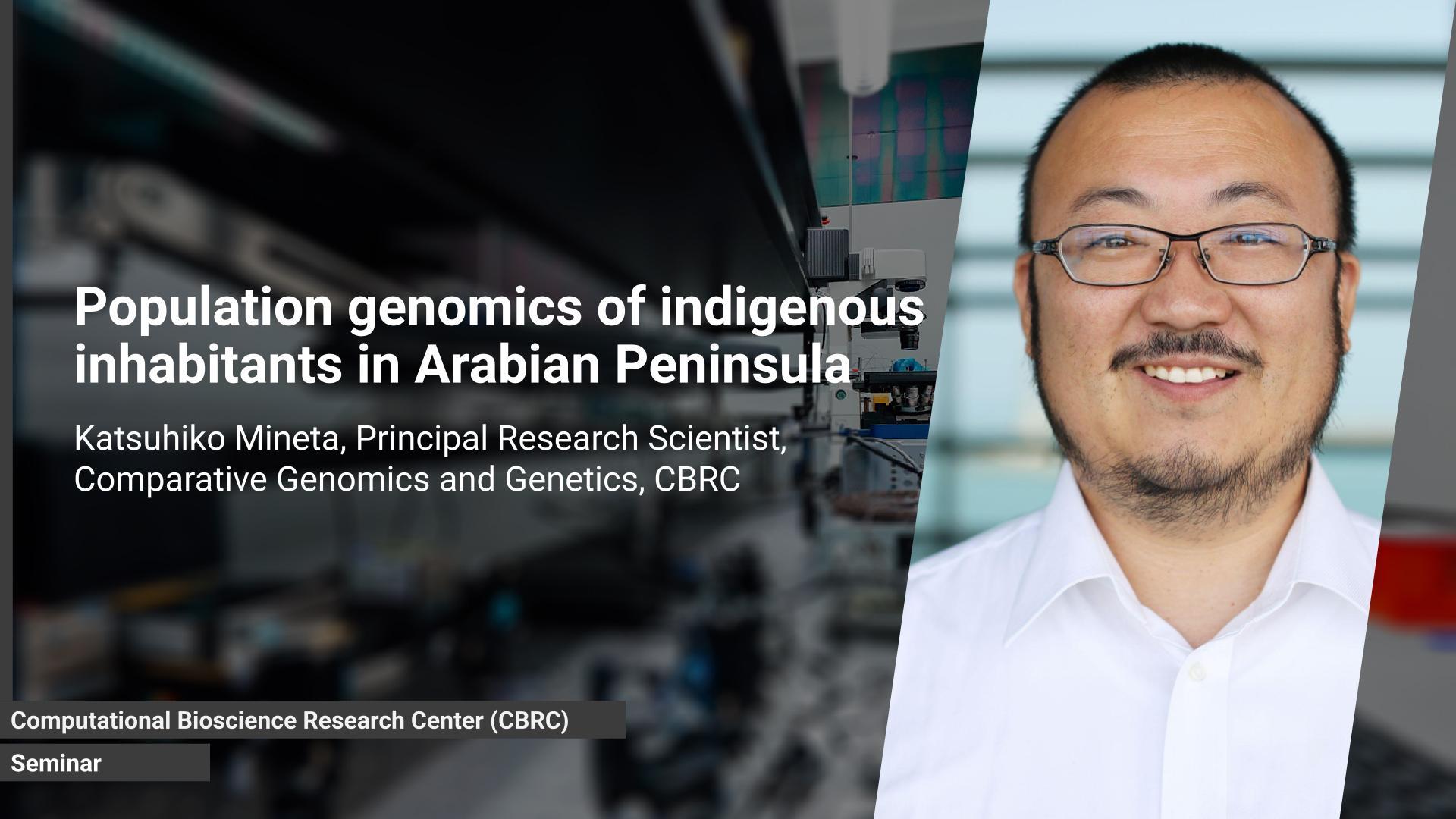Dr. Katsuhiko Mineta recently gave a online talk on "Population Genomics of Indigenous Inhabitants in Arabian Peninsula". Dr. Katsuhiko is a principal research scientist at Computational Bioscience Research Center (CBRC) at King Abdullah University of Science and Technology (KAUST). He has been working in the field of bioinformatics and -omics studies from both experimental and computational approaches, and currently, he is conducting the environmental and population omics studies.
In his talk, Dr. Katsuhiko explains how with the help of population genomic profiling one can identify granular map of population structure in Arabia and what impact it would have on future genetic studies of diseases.
Abstract: Arabian Peninsula has been home to ancient civilizations and elucidating its population structure can add to our understanding of human history, which may have contributed to ancient waves of migration out of Africa. Recently, we have conducted population genomic profiling of 957 unrelated individuals who self-identify with 28 large tribes in Saudi Arabia. Consistent with the tradition of intra-tribal unions, the subjects showed strong clustering along tribal lines with the distance between clusters correlating with their geographical proximities in Arabian Peninsula. However, these individuals form a unique cluster when compared to the world’s major populations, suggesting that tribal linages have been maintained for a long time in Arabian Peninsula in spite of admixture. We also examined the COVID-19 host genetic factor at populations in Arabian Peninsula and compared it with the world populations. Our results disclose a granular map of population structure in Arabia and have important implications for future genetic studies into diseases.

